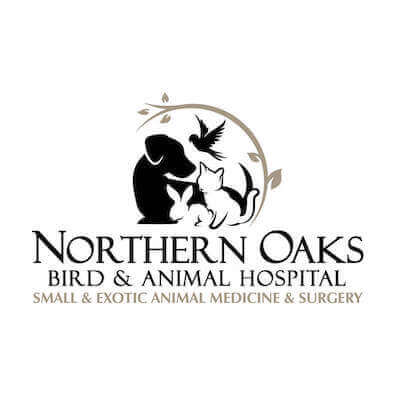At Northern Oaks Bird & Animal Hospital and Heritage Oaks Animal Hospital we understand the importance of dental health and disease prevention. Dental care requires ongoing cleaning and polishing to prevent significant disease. By age four, many cats have significant gingivitis, and many also have periodontal disease. Every examination at our hospital includes a thorough oral visual exam to assess the condition of your cat's teeth and gingiva. At that time we can determine whether your cat requires a dental prophylactic cleaning or further procedures.
Dental disease is a slow progressing, but serious disease that causes pain and affects the cat's overall health and well-being. Cats will not show signs of oral discomfort. Because the pain associated with dental problems occurs slowly over time, they simply learn to live with it. This is why it is important that all cats see a veterinarian annually to assess their oral health.
Dr. Becka Byrd
Northern Oaks Bird & Animal Hospital and Heritage Oaks Animal Hospital
What is Proper Dental Hygiene For Your Cat's Teeth?
There are several ways to ensure proper cat dental care. All of them involve diligence and commitment from you as a cat owner. Your feline friend will not tell you that dental care is needed, so it is up to you to proactively address his or her needs.
- Good nutrition is the foundation for good dental health
- If possible, establish a cat teeth cleaning routine when your cat is young
- Schedule semi-annual exams for cats
- Watch for signs of possible dental issues, such as bad breath
- Tell your vet during the checkup about any behaviors you've noticed or concerns you have such as poor grooming or food dropping
- Early prevention is extremely important for avoiding or treating serious dental issues
Proper cat teeth cleaning consists of an oral examination and X-rays/radiographs under anesthesia in order to properly diagnose any dental disease that may be present. Most dental disease in cats occurs under the gum line. Many cats produce cat odontoclastic resorption lesions (FORL) in their teeth. These are cavity-like lesions at the neck of the tooth (where the gum meets the tooth). These lesions cause the roots to be resorbed, and they are painful. These occur with or without visible calculus so they are not always something you can see. Unfortunately, your cat will naturally adapt to live with the pain these lesions cause. In these cases, the treatment usually requires extraction of the affected tooth/teeth. Not all cats are plagued with cat odontoclastic resorption lesions (FORL). Only a thorough examination involving radiographs obtained by your veterinarian under anesthesia can determine if your cat is living with these lesions. Treatment is curative. However, cats who produce these lesions are likely to produce more in their lifetime and will require annual care.
Other dental issues in cats include gingivitis and periodontal disease that may require medication and or dental work to alleviate the pain. The importance of annual examinations cannot be underestimated. In order to remain healthy, dental care is something you should trust to your veterinarian. There is no such thing as thorough non-sedation dentistry for pets.
How Often Is It Necessary To Clean A Cat's Teeth?
The recommended frequency of cleaning your cat's teeth depends upon several factors such as:
- Age
- Genetics
- Diet
- Lifestyle
- Existence of other health conditions
Regardless of signs or symptoms, your cat should have a dental checkup annually at a minimum. While you should be looking at your cat's teeth periodically yourself, it is easy to miss the types of problem signs that a trained and experienced veterinarian will pick up on. It is significantly easier to address and resolve dental issues that are spotted early, compared to dental issues that go unnoticed and are allowed to further develop. Therefore, a proactive approach to cat dentistry is recommended.
Many cats will allow you to brush their teeth. You should brush your cat's teeth daily with specially designed brushes and cat hygiene products. Our technicians are trained to provide instructions on how you can brush your cat's teeth at home. Let us work with you to ensure the best possible dental health for your cat.
Gum Disease In Cats
Gum disease, also known as gingivitis, can become periodontal disease if it spreads into the tooth. This condition affects a cat's gums and the portions of his or her teeth below the gum line and may include cat odontoclastic resorption lesions (FORL). Periodontal disease is the most prevalent illness in cats over three years of age. However, it is also the most under-diagnosed, as many cat owners unfortunately just do not realize the importance of cat dental care. Although the detection of cat gum disease can be subtle, periodic veterinary checkups every 6—12 months can be effective in helping diagnose cat gum disease before it becomes severe. Some cats have a version of this that is autoimmune, called cat stomatitis, and for these cats, the only cure is full mouth extractions.
Gum disease has four stages:
- Early gingivitis
- Advanced gingivitis
- Early periodontitis
- Established periodontitis
Gum disease in cats is only reversible if caught early, and only the early gingivitis stage is considered fully reversible.
Cat Tooth Extraction
Cat tooth extraction is necessary in several cases, including advanced-stage gum disease. Advanced periodontal disease can cause loss of viable teeth. The teeth that are severely affected should be extracted before the damage is permanent.
Other reasons for cat tooth extraction include:
- Retained deciduous or maloccluded teeth are less common causes for extraction
- Dental caries, FORLs, or teeth that are severely infected are always considered for extraction
- Cats that suffer from root abcess or jaw fractures may be treated with either root canal therapy or tooth extractions based on the severity
The cost of cat tooth extraction is based on the type of procedure performed, and it may include hospitalization, anesthesia, painkiller medication, X-rays, and surgical supplies. Therefore, it's best to always take preventive measures to avoid surgeries and cat tooth extraction procedures.
Common Cat Dental Problems
- Plaque build-up
- Gingivitis
- Periodontal disease
- Tooth loss
- Mouth sores and ulcers
- Feline Odontoclastic Resorptive Lesions (FORL)
- And as in humans, kidney, liver and heart disease
Cats are very adept at hiding the symptoms of pain and illness. Bad breath is the only symptom of dental problems that you are at all likely to observe in your cat. If your cat has noticeable bad breath, you should schedule a dental examination. However, in severe cases, you may also notice one of the following symptoms:
- Pawing at the mouth
- Drooling
- Problems eating, loss of appetite
- Red, swollen, bleeding gums
- Loose, broken, or missing teeth
- Blood in saliva or nasal discharge
- Lesions in the mouth
Your cat may very well have dental issues that require attention but NOT show any of the symptoms listed above. However, if any of the above symptoms are observed, please schedule an appointment right away.
Schedule A Cat Dental Care Appointment
Making an appointment for cat dental care is as easy as picking up the phone or sending us an email. Our staff is here to help make your trip to the dentist easy for you while making it as painless and comfortable as possible for your cat.
Cat Dental - FAQs 1
Dr. Becka Byrd
Northern Oaks Bird & Animal Hospital
Why does my cat need anesthesia for teeth cleaning?
So think about the process when you have your teeth cleaned and you have x-rays taken and then the dentist probes your teeth. Cats will not sit still for that. So when we have somebody say they're going to perform a non-anesthetic dental cleaning, all they're doing is scraping plaque off of the tooth. That is not actually performing a dental cleaning. So, what we're doing is fully assessing the teeth. We are doing this with x-rays under anesthesia, we're assessing the roots, we're assessing the gum line, and we're probing around the roots of those teeth to see if there are pockets to determine if there are any abscesses or if there's any bone or gum loss. That is much more than simply scraping the plaque off. We then go ahead and remove the plaque and calculus. We use an ultrasonic cleaner after that, and then we polish those teeth. So to fully assess those teeth and to do a complete exam, we have to have an anesthetized patient to do that properly or we're only doing about a fourth of the job.
Are there ever circumstances where they can be cleaned without anesthesia?
The reality is no. So if we have a cat with bad teeth and we're trying to just take the plaque off, we're making basically a rotten fence pretty, but we're not making a rotten fence better. So there is no point in doing that. We have rotten teeth in there; we've made them look pretty, but we haven't actually helped the teeth themselves. So, there isn't really a good reason for that. So, let's look at what we need to actually do and fully do it instead of trying to save money by not doing the full job because we're not doing the cat any favors. We're not making their mouth less painful. We're not resolving the disease. We're just making it look pretty, like painting a rotten fence.
Why are antibiotics and pain medication sometimes prescribed?
Well, if we really have bad teeth, we're going to give antibiotics because we have to treat the infection first. And in treating the infection, then we can address the underlying disease and eliminate that. And pain medications are because sometimes our pet's mouth is really painful. And so we don't want to cause a cat to not eat after we perform their procedure. We want to clean those teeth, address the underlying infection, remove any teeth that have to be removed, and then alleviate the pain that's involved. So sometimes, we'll use a long acting injection that'll last for three days. Sometimes, we'll use something even stronger, but we want to make sure that they're comfortable after that procedure. We also apply laser therapy for acute pain relief, and we'll provide anti-inflammatories as well. It's very important that these guys have some humane treatment when they're having this procedure because if they're at the point they need pain medication, they definitely need a lot of it.
How do you know if your cat will have a reaction to anesthesia?
Unfortunately, that's unpredictable. It's very, very rare. And so worrying about that is really something that prevents people from proceeding with this a lot. But if we have a healthy cat, if we have healthy lab work, and you're going to an accredited hospital that provides IV fluids, IV catheterization, and state-of-the-art anesthetics, then the risk of an anesthetic reaction is very, very low. So please choose a hospital that provides all of those things. And you can call us for further details if you have questions about that. And that may be the difference in why you're seeing price differences between hospitals. But if your concern is truly the anesthesia, you want it as safe as possible. Give us a call if you have questions and we're happy to review that with you.
If you have any other questions, please give us a call at (210) 496-1315. You can also email us at [email protected] and we will get back to you as soon as we are able. Don't forget to follow us on social media: Facebook and Instagram



